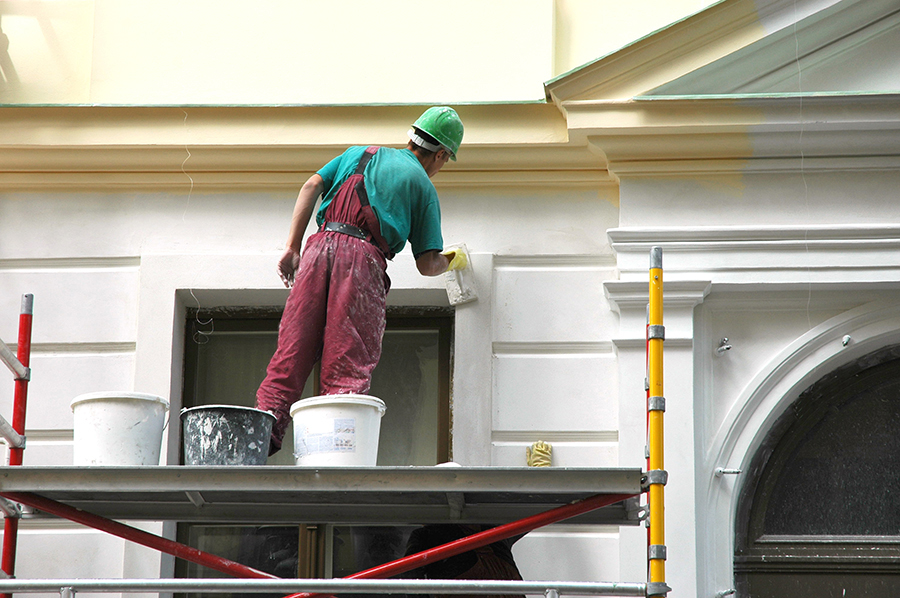Regarding turning a home into a home, not many things are as effective as a fresh coat of color. The appropriate colors can infuse new life into your space, improve its aesthetic appeal, and possibly boost its value. Hiring a skilled painting contractor can be a turning point in this process, guaranteeing that every detail is meticulously executed. Whether you are looking to renew your interior, revamp your exterior, or take on a DIY project, understanding the variety of contractor services available can help you make wise decisions.
In this write-up, we will discuss the different aspects of hiring a painting contractor, from selecting the ideal color for your home to understanding what to expect during the procedure. We will examine the advantages of professional services versus DIY painting, the significance of proper preparation, and tips for maintaining your investment. With insights on the newest trends and practical advice, we strive to guide you through the vibrant world of painting, aiding you achieve the beautiful, inviting atmosphere you want in your living spaces.
Selecting the Right House Painter
Identifying the appropriate house painter is crucial to ensuring a positive painting project. Begin by seeking recommendations from family, friends, or neighbors who have recently hired a painter. Online reviews can also offer information into the quality of work and customer service offered by different contractors. Look for experts who have good reviews about their trustworthiness, thoroughness, and ability to engage clearly throughout the project.
Once you have a selection of potential painters, request bids to assess their pricing and services. Be sure to check each contractor about their experience, including the kinds of projects they work with, and check if they have current insurance and credentials. This not only assists shield you as a homeowner but also guarantees you are hiring a competent professional who follows safety regulations and regulations.
In conclusion, don’t forget to evaluate their portfolio of completed jobs. A trustworthy house painter should have a showcase of completed projects that showcase their style and expertise. Communicating with their past clients can offer valuable perspective into the painter's method and reliability. Selecting the right painting contractor involves thorough research and deliberate thought, which will ultimately lead to a more pleasing outcome for your home.
Interior and Outdoor Paint Advice
When it comes to interior paint, setup is crucial to achieving a flawless finish. Start by removing the area of furniture and protecting floors with protective sheets to protect them from paint splatters. Properly wash walls to ensure that dirt and grease do not hinder with paint stickiness. Don’t forget to fix any holes or cracks, and sand down uneven areas for a satin surface. Choosing the right primer is also essential, especially for darker colors or when painting over discolored surfaces.
For outdoor painting, scheduling and the weather play a significant role in the success of your project. The ideal time of year to tackle an outdoor paint job is during moderate temperatures, ideally in early summer or early fall when humidity is minimal. Be sure to check the surfaces for signs of wear or peeling paint before beginning, as this will help determine if repairs are needed. Also, use paint specifically formulated for exterior conditions to ensure long-lasting results.
When selecting paint for high-traffic areas or exterior projects, robustness should be a primary concern. Consider opting for premium, cleanable paint that can withstand wear and tear. For exterior spaces, look for weatherproof finishes that can handle humidity and UV exposure. Not only will this prolong the longevity of your paint, but it will also maintain the aesthetic appeal of your property throughout the seasons.
Comprehending Different Paint Classifications and Techniques
Deciding on the suitable paint type is essential for a prosperous painting task. There are 2 main types: oil-based and water-based coatings. Oil-based coatings are renowned for their durability and smooth finish, making them perfect for frequently-used areas and surfaces that demand longevity. However, pop over to these guys have prolonged drying times and produce more intense odors during use. Water-based coatings, on the contrary, dry swiftly and are more convenient to clean up, making them a favored choice for interior applications. Additionally, advancements in technology have resulted in top-notch water-based options that mimic the performance of oil-based paints.
The coating of the paint also plays a critical role in the overall look and feel of your space. Common finishes include flat, egg shell, satin, semi-gloss, and high-gloss. Matte finishes are ideal for ceilings and lightly-used areas, while silk and eggshell provide a subtle sheen that works nicely in living areas and bedrooms. Semi-gloss and gloss finishes offer durability and are perfect for trim, cabinets, and other frequently-used surfaces. Selecting the appropriate finish not only enhances the visual appeal but also guarantees the paint remains durable over time, especially in regions with varying humidity and temperature.
When it comes to painting methods, homeowners often debate between mist spraying and roller application. Mist spraying permits an uniform coat and can cover large areas quickly, making it advantageous for exterior projects or when painting large spaces. However, it requires more setup and can result in overspray if not done with caution. Roller application offers more control and is preferable for interior projects, especially on textured surfaces. Grasping these paint types and techniques will allow you to make wise choices that fit your project needs and goal outcomes.

